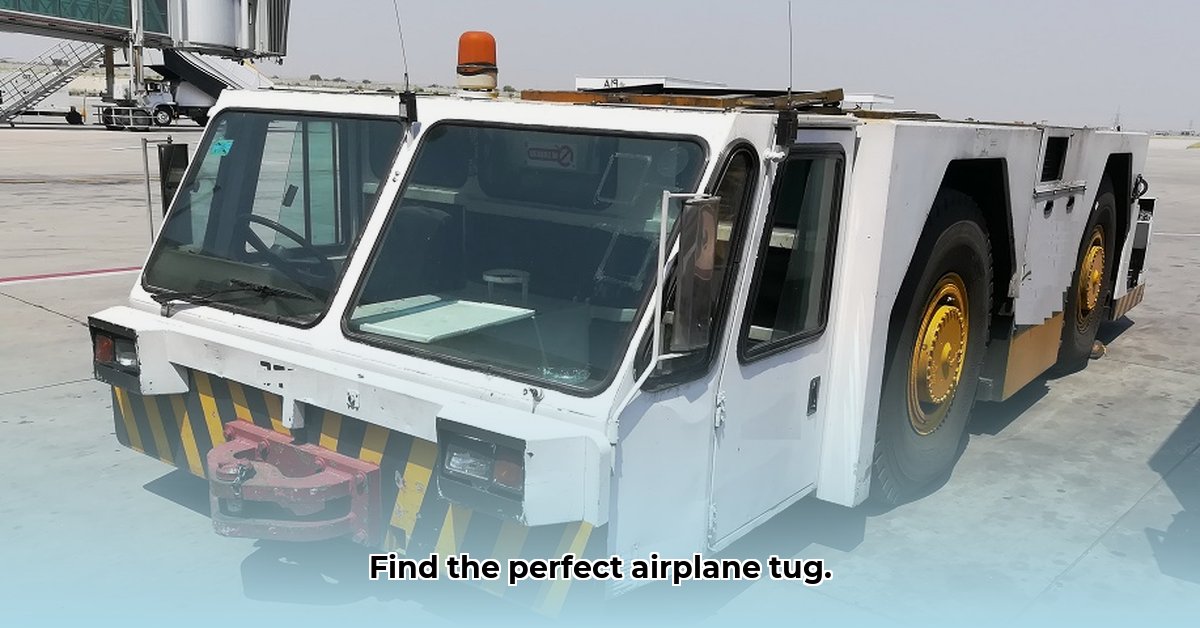
Choosing the right airplane tow tractor is crucial for efficient and safe airport operations. This guide provides a comprehensive overview to help manufacturers, airport operators, and other stakeholders make informed decisions.
Types of Tow Tractors: A Comparative Analysis
Airplane tow tractors are broadly classified by their power source and drive type. Understanding these differences is key to selecting the right model.
Power Sources: Electric vs. Internal Combustion
The primary distinction lies in the power source: electric or internal combustion (typically diesel).
| Feature | Electric Tug | Internal Combustion Tug (Diesel) |
|---|---|---|
| Emissions | Minimal | Significant (particulates, NOx) |
| Noise Levels | Very low | High |
| Range | Dependent on battery capacity; typically shorter | Generally longer |
| Fueling/Charging | Requires charging infrastructure | Requires fueling infrastructure |
| Upfront Cost | Typically higher | Typically lower |
| Ongoing Costs | Lower operating costs (electricity); higher potential for battery replacement | Higher operating costs (fuel); higher maintenance costs |
Electric tugs are gaining popularity due to their environmental benefits and reduced noise pollution. However, their range and charging requirements are critical considerations. Internal combustion tugs offer greater range and established fueling infrastructure, but come with higher operating costs and greater environmental impact. Which is better? It depends on your specific needs and priorities. Does the reduced environmental impact and quiet operation of an electric tug outweigh the higher upfront cost and charging infrastructure requirements?
Drive Types: Maximizing Maneuverability
Different drive types offer varying levels of maneuverability and traction:
- All-Wheel Drive (AWD): Provides superior traction in adverse weather conditions.
- Four-Wheel Drive (4WD): Similar to AWD, but with more robust capability; often found on heavier-duty tugs.
- Four-Wheel Steering (4WS): Enables exceptional maneuverability in tight spaces.
- Combination Drive Systems (e.g., AWD/4WS): Offer the benefits of both AWD and 4WS, maximizing both traction and maneuverability.
The optimal drive type depends heavily on the airport's layout, climate, and the types of aircraft being towed. Do you need superior traction in snowy conditions, or is maneuverability in tight spaces the primary concern? Consider these factors carefully. Does a combination drive system's higher price justify its benefits in your specific environment?
Choosing the Right Tow Tractor: A Step-by-Step Guide
Selecting the appropriate tow tractor involves a systematic approach:
Assess Needs: Determine the aircraft types and weights to be towed, the budget constraints, and any environmental regulations that need to be addressed.
Compare Models: Research various manufacturers and models, comparing specifications, features, and total cost of ownership (TCO). This includes considering maintenance requirements and potential downtime.
Calculate TCO: Calculate TCO, which includes the initial purchase price, operating costs (fuel/electricity), maintenance, repairs, and potential battery replacements (for electric tugs). A comprehensive TCO analysis is critical.
Prioritize Safety: Ensure the tug includes essential safety features, such as robust braking systems, adequate visibility for the operator, and compliance with all relevant safety regulations. Is the safety rating of a particular model a key factor in your decision-making process?
Evaluate Long-Term Sustainability: Consider the environmental impact and long-term maintenance costs. Electric tugs, while more expensive initially, may offer lower operating costs and environmental advantages over time.
Make Informed Decision: Make a well-informed decision weighing the above factors.
Maintenance and Operation: Ensuring Optimal Performance and Safety
Regular maintenance is crucial for prolonging the lifespan of the tug and minimizing downtime. This includes scheduled inspections, fluid changes, and prompt attention to any potential issues. Adherence to a robust maintenance schedule can significantly reduce the risk of costly breakdowns and safety incidents.
Regulatory Compliance: Navigating the Legal Landscape
Compliance with all relevant safety and environmental regulations is critical for legal operation. This includes understanding and meeting emissions standards, particularly for electric tugs, where battery disposal and charging infrastructure regulations may apply. Staying up-to-date on regulatory changes is essential for avoiding potential penalties and ensuring continued operational compliance.
Conclusion: Making the Right Choice
Selecting the right airplane tow tractor is a significant investment requiring careful consideration of various technical and operational factors. By following this guide and completing a thorough comparative analysis, stakeholders can confidently choose a tug that meets their specific requirements, optimizes efficiency, and ensures the highest level of safety.